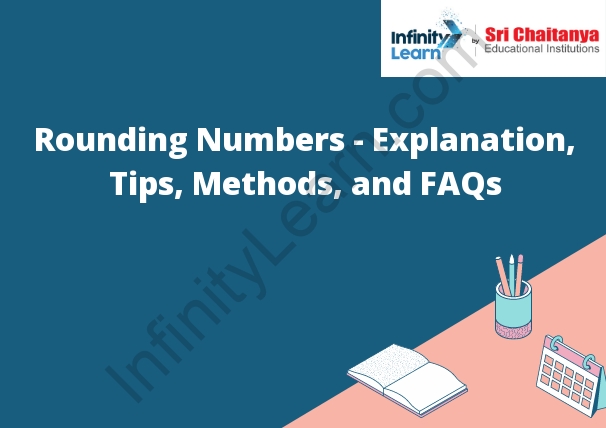Table of Contents
What is Rounding?
Rounding is a mathematical term that refers to the process of truncating a number to a certain number of decimal places. This can be done either up or down, depending on the rounding method that is used. For example, the number 123.456 can be rounded down to 123.45 or up to 123.46. The number 123.456 can also be rounded to 123.5 or 123.4, depending on the rounding method that is used. Rounding Numbers – Explanation Tips Methods and FAQs.

Rounding Decimals
Rounding a decimal means to find the nearest whole number to the given decimal. This is done by looking at the number after the decimal point and finding the nearest number that is a multiple of 5. if the number after the decimal point is 5 or higher, the number is rounded up. If the number after the decimal point is 4 or lower, the number is rounded down.
Tips for Rounding Decimals
When rounding decimals, look at the number to the right of the decimal point. If the number to the right of the decimal point is 5 or greater, round the decimal up. If the number to the right of the decimal point is 4 or less, round the decimal down.
How to do Rounding of Fractions?
There are a few steps in rounding fractions. In fractions, there is a number above the line (the numerator) and one below the line (the denominator). This line represents division of these two numbers. In order to round a fraction, find the number that is closest to the one on top of the fraction line. This is the number that will be used to round the fraction. If the number on top is 5 or greater, round the number up. If the number on top is 4 or less, round the number down.
How to do Rounding and Sums?
To round a number, look at the number to the right of the decimal point. If the number to the right of the decimal point is 5 or greater, round the number up. If the number to the right of the decimal point is 4 or less, round the number down. To add two numbers, add the numbers together.
Rounding a Number to The Nearest Ten
To round a number to the nearest ten, we look at the number’s value and determine which whole number value it is closest to. If the number is closer to the number ten, we round it up to the number ten. If the number is closer to the number one, we round it down to the number one.
Here are some examples:
The number 153.5 is closer to the number 154, so we round it up to the number 154.
The number 153.4 is closer to the number 153, so we round it down to the number 153.
Rounding a Number to The Nearest Hundred
The nearest hundred is 145.
How to Prepare Notes on Rounding Numbers?
To round a number, look at the number after the decimal point. If the number after the decimal point is 5 or higher, round the number up. If the number after the decimal point is 4 or lower, round the number down.
Does Vedantu have any Material on Rounding Numbers?
Yes, Vedantu has a material on rounding numbers. It covers the following concepts:
-Rounding Decimals
-Rounding Whole Numbers
-Rounding Money
-Rounding Time
-Rounding Fractions








